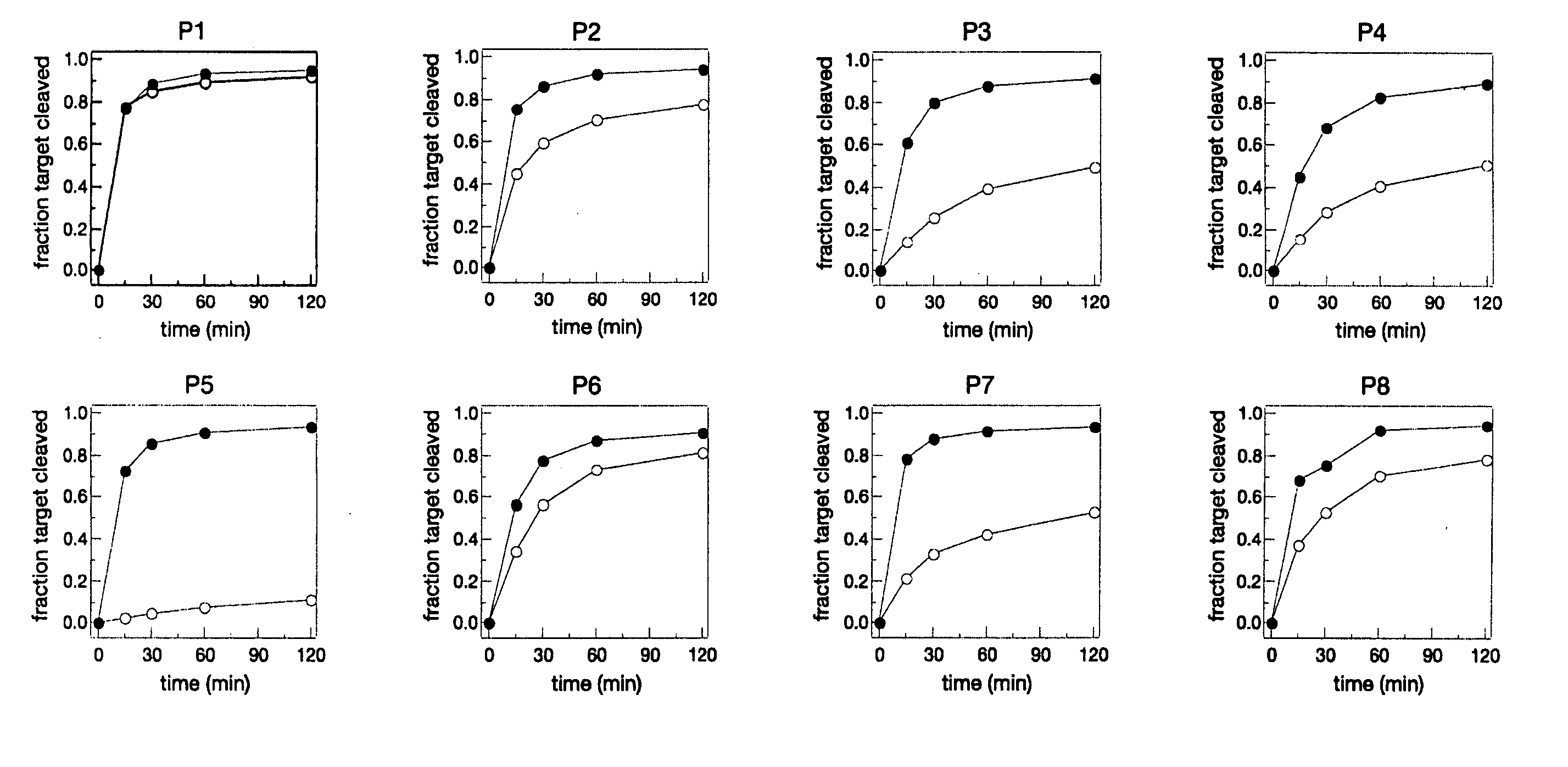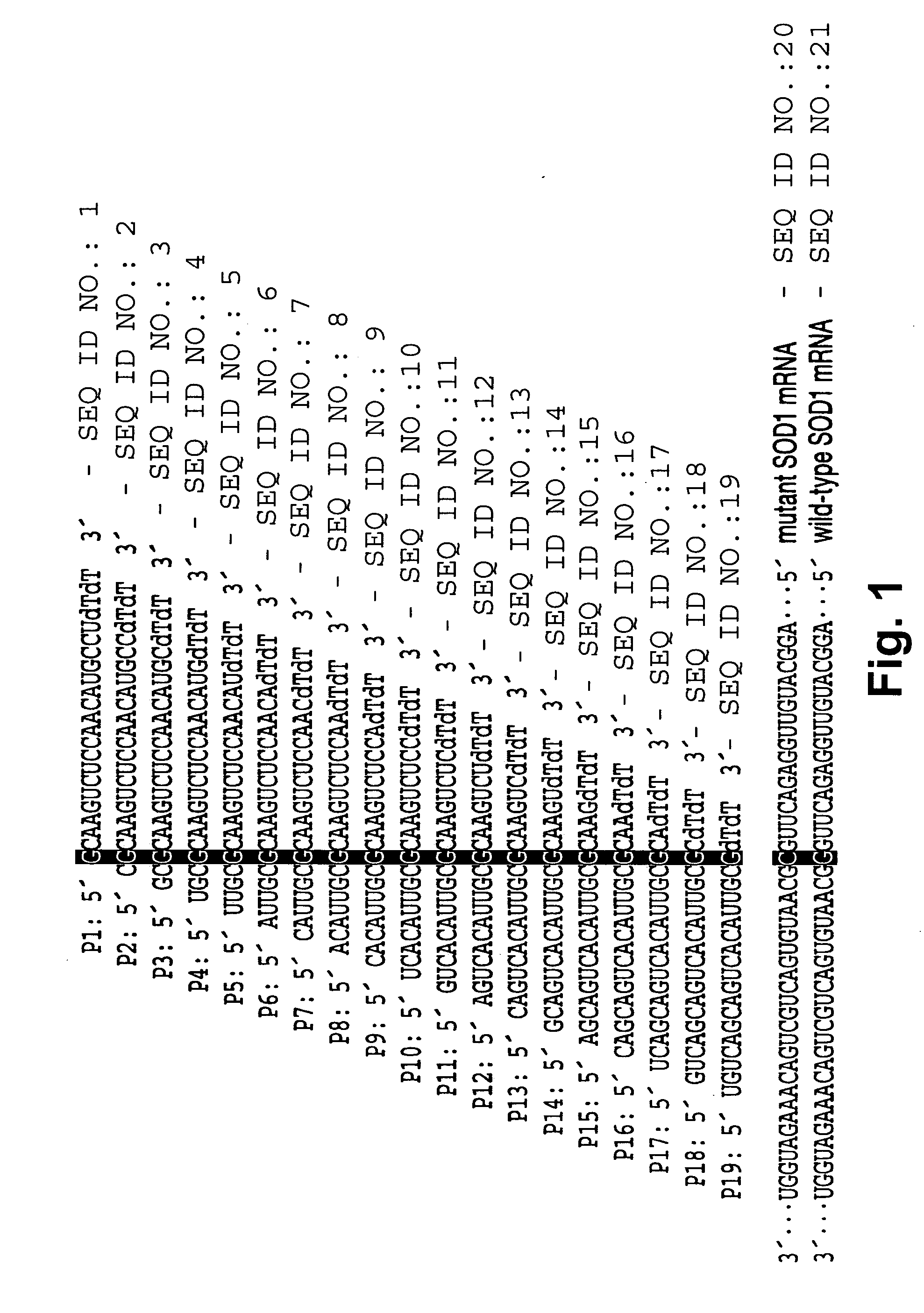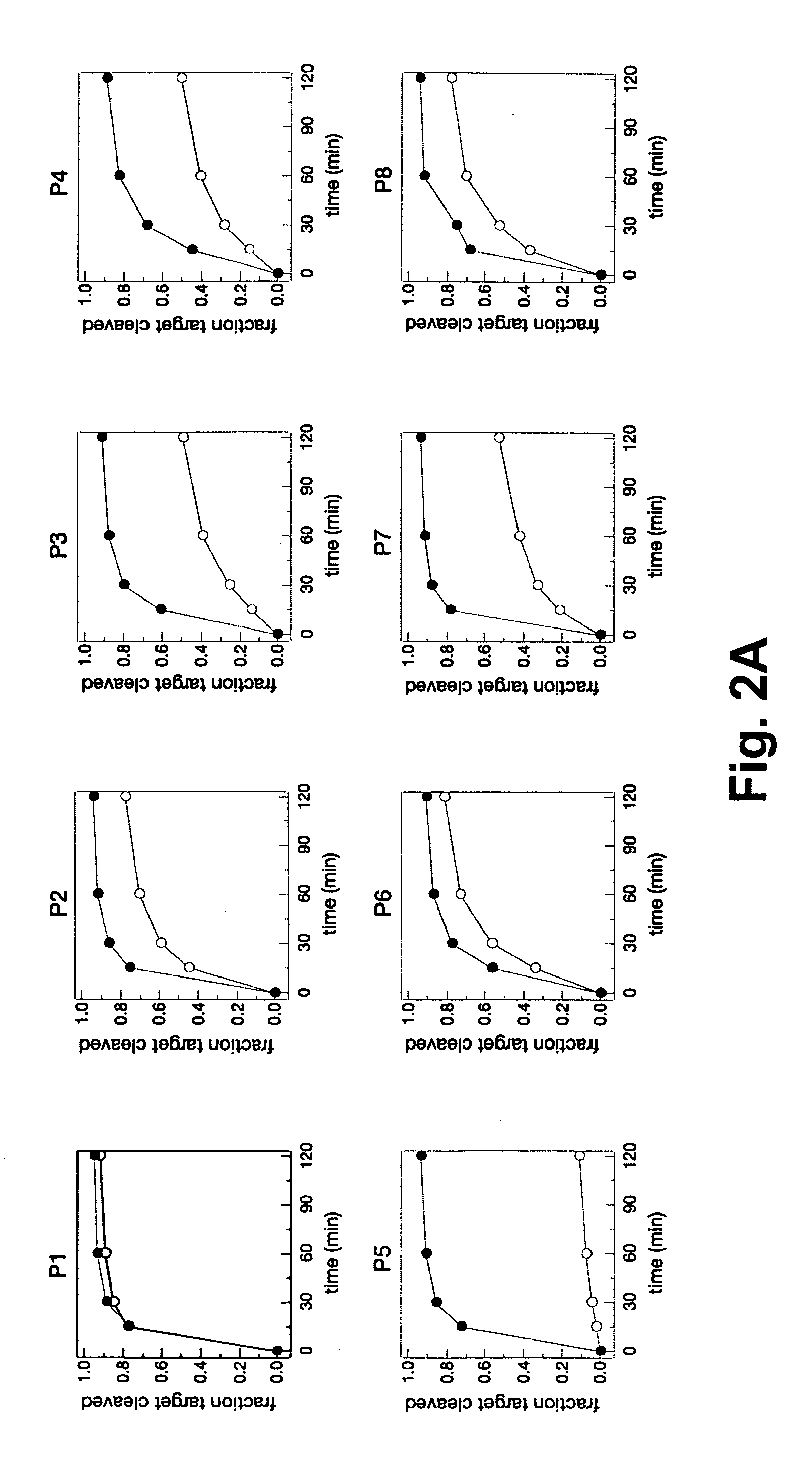Compositions and methods for enhancing discriminatory RNA interference
a technology of discriminatory rna interference and composition, applied in the field of composition and method for enhancing discriminatory rna interference, can solve the problems of not ensuring good single-nucleotide discrimination, and reducing or abolishing the ability of the agent to direct rna silencing against non-target mrnas
- Summary
- Abstract
- Description
- Claims
- Application Information
AI Technical Summary
Benefits of technology
Problems solved by technology
Method used
Image
Examples
examples
[0246] The following materials, methods, and examples are illustrative only and not intended to be limiting.
[0247] General Methods
[0248] Preparation of Drosophila embryo lysate and target RNAs, cap labeling, siRNA annealing, and in vitro RNAi reactions were as described (Zamore et al., Cell, (2000), 101: 25-33; Haley et al., Methods, (2003), 30: 330-336; Tuschl et al., Genes Dev., (1999), 13:3191-3197). SOD1 mutant and wild-type RNAs were transcribed from BamHI-linearized plasmids (Crow et al., J. Neurochem, (1997), 69: 1936-1944) with recombinant histidine-tagged T7 RNA polymerase. Target RNAs and siRNAs were used at ˜5 nM and 50 nM final concentrations, respectively or ˜0.5 nM and 100 nM, respectively, for single turnover conditions. Gels were dried and exposed to phosphorimager plates (Fuji) and analyzed using a FLA-5000 phosphorimager (Fuji). Data was analyzed and quantified using ImageGuage 3.45 (Fuji), Excel X (Microsoft, Redmond, Wash.) and Igor Pro 5.01 (Wavemetrics, Lake ...
example i
RNA Silencing of a Tiled Set of Functionally Asymmetric siRNAs Targeting Mutant SOD1
[0253] A set of 19 siRNAs (SEQ ID NOs 1-19) were designed by tiling across the G85R point mutation of human SOD1 (see FIG. 1). The G85R mutant (SEQ ID NO: 20) contains a cytosine at position 323 of the mRNA, whereas the wild-type mRNA (SEQ ID NO: 21) bears a guanosine at that position. Each siRNA fully matched the mutant SOD1, but contained a G:G mismatch with wild-type. To ensure that the antisense strand of each siRNA served as the guide in RISC, each siRNA had an unpaired, antisense-strand 5′ end, a design strategy that imparts ‘functional asymmetry’ to an siRNA (Schwarz D S, et al., Cell, 115: 199-208 (2003)). In vitro RNAi experiments using a cell-free Drosophila embryo lysate system demonstrated that each of the 19 siRNAs effectively targeted its fully matched target, the mutant G85R allele of SOD1, allowing assessment of how well each siRNA discriminated against the wild-type SOD1 allele (see...
example ii
Analysis of Tiled siRNAs in Cultured Human Cells
[0257] The efficacy and discriminatory power of each siRNA of the tiled set of siRNAs from Example I were examined in a human cell-based assay. SiRNAs were co-transfected into HEK 293 cells with a plasmid expressing a firefly (Photinus pyralis, Pp) luciferase bearing either the relevant region of the wild-type SOD1 or the G85R mutant sequence cloned into its 3′-untranslated region. Silencing efficiency was determined by measuring firefly luciferase activity, relative to an untargeted Renilla luciferase control, 24 h after transfection with either 2 nM or 20 nM siRNA (see FIGS. 6A-6C). Wild-type SOD1 contains a G at position 323; in the G85R mutant, this position is a C. The siRNAs were also evaluated using a Pp-luciferase-SOD1 fusion target containing a uridine residue at position 323 of the SOD1 mRNA sequence, thereby facilitating the formation of a G:U wobble base pair between the target mRNA and the “seed” region of the siRNA guide...
PUM
| Property | Measurement | Unit |
|---|---|---|
| Temperature | aaaaa | aaaaa |
| Temperature | aaaaa | aaaaa |
| Fraction | aaaaa | aaaaa |
Abstract
Description
Claims
Application Information
 Login to View More
Login to View More - R&D
- Intellectual Property
- Life Sciences
- Materials
- Tech Scout
- Unparalleled Data Quality
- Higher Quality Content
- 60% Fewer Hallucinations
Browse by: Latest US Patents, China's latest patents, Technical Efficacy Thesaurus, Application Domain, Technology Topic, Popular Technical Reports.
© 2025 PatSnap. All rights reserved.Legal|Privacy policy|Modern Slavery Act Transparency Statement|Sitemap|About US| Contact US: help@patsnap.com



